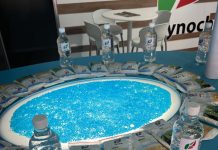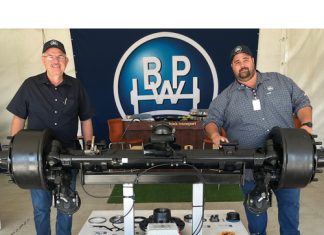The herbicidal efficacy of glyphosate and glufosinate is reduced by various external factors. These include salt antagonism from carrier water, spray droplet bounce, insufficient droplet spreading and reduced absorption because of low humidity.
In the past it would have been necessary to use at least two adjuvants to overcome these problems. However, Winfield United have developed a four-in-one adjuvant for glyphosate and glufosinate that makes the use of multiple adjuvants unnecessary. In the past it was unheard of to formulate an adjuvant that can accomplish all of this, but thanks to innovative technology, it has been achieved. Class Act NG (L 10477) is marketed in South Africa by Villa Crop Protection. The NG is an abbreviation for ’next generation’ – as it is truly a giant step for adjuvant technology. In this article the four components that are contained in Class Act NG will be discussed in more detail.
CornSorb technology increases humectancy and absorption
One of the biggest challenges is the tedious absorption process of these herbicides. This process lasts for an extended period, leaving the herbicide droplet residual exposed to the harsh South African weather conditions. The CornSorb technology in Class Act NG is a patented humectant system that keeps the droplet residual at the correct moisture level for an extended period after application. It therefore creates an environment that is ideal for increased herbicide absorption. In addition, it increases the total amount of herbicide that is absorbed, ultimately resulting in improved weed control.
Alkyl polyglucoside (APG) surfactant increases coverage and absorption
When using Class Act NG within the registered rate range, it supplies a full rate of APG surfactant. The surfactant greatly reduces droplet bounce, enabling the weed to retain more spray droplets. This results in efficient coverage that is vitally important for acceptable weed control. It also reduces the surface tension of the spray solution so that droplets cover a larger surface area and have more contact with the leaf surface. However, the APG surfactant does not induce too much droplet spreading, as excessive spreading can limit herbicide absorption (Figure 1).

Lastly, the APG surfactant assists in the absorption process. The surfactant chemistry and the physical spreading of droplets have a major impact on glyphosate and glufosinate absorption. The surfactant in Class Act NG supplies the correct chemical and physical properties for effective weed control.
Ammonium sulphate decreases salt antagonism and increases efficacy
All glyphosate spray solutions should contain ammonium sulphate. The sulphate anion binds to antagonistic cations like calcium, magnesium and sodium during droplet drying, before these cations can bind to the glyphosate. It therefore protects the glyphosate to keep it in a form that is readily absorbed into weeds. The ammonium cation plays a crucial role in the absorption process.
It has been proved that ammonium sulphate is also beneficial to glyphosate, even in the absence of antagonistic cations and should be applied as a standard practice. Class Act NG contains enough ammonium sulphate to negate the antagonistic cations from most South African water sources and to increase herbicide efficacy.
Less foaming with Class Act NG
Many water-soluble herbicides like glyphosate are prone to foam. This is because it also contains some surfactant in the formulation. The surfactant in Class Act NG will also foam to a certain extent. Therefore, Class Act NG has a built-in anti-foaming agent that reduces foaming to ensure an easy-to-apply spray solution.
Summary
Class Act NG is a four-in-one adjuvant designed specifically for herbicides like glyphosate and glufosinate. It increases coverage, the spreading of spray droplets and absorption. Furthermore, it helps to extend the droplet drying time to facilitate more conducive conditions for absorption. The ammonium sulphate in the formulation complexes antagonistic cations and also increases absorption, while the anti-foaming agent helps to combat excessive foam. A truly multi-functional adjuvant that gets more herbicide onto and into the weeds!
Registration details: Class Act NG
Reg. No. L 10477 Act No. 36 of 1947, Caution ACTIVE INGREDIENTS ammonium sulphate 480 g/l PLUS a non-ionic surfactant (Alkylpolyglycoside C8-10 / Agnique PG 8105) Registration Holder: Winfield Solutions, Registration Holdings (Pty) Ltd. Co. Reg. No.2015/312008/07, PO Box 10413, Aston Manor, 1630, Tel: 011 396 2233, www.villacrop.co.za



















